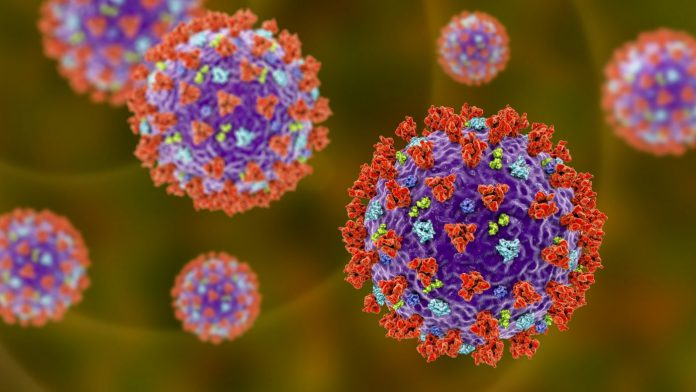
People resistant to COVID-19 have “never-seen-before” immune responses and possibly high levels of HLA-DQA2. These findings come from researchers at the Wellcome Sanger Institute, University College London (UCL), Imperial College London, the Netherlands Cancer Institute, and their collaborators who used data from a unique “challenge study.”
Severe acute respiratory syndrome coronavirus 2 (SARS-CoV-2) was administered to healthy adult volunteers as part of the world’s first COVID-19 human challenge study. That study was initiated to allow “controlled investigation of pathogenesis, correlates of protection and efficacy testing of forthcoming interventions.” Then, with nasopharyngeal swabs and blood samples, they used single-cell sequencing technology to create a comprehensive timeline of how the body responds to SARS-CoV-2 exposure.
Their work was published in Nature this week. The lead author is Rik G.H. Lindeboom of the Wellcome Sanger Institute and now The Netherlands Cancer Institute.
SARS-CoV-2 has infected millions across the globe with COVID-19, which is potentially fatal. But many have had contact with someone positive for COVID-19, but have managed to avoid getting ill themselves. While previous studies have examined COVID-19 patients after symptom onset, in this new study researchers set out to capture immune responses right from exposure, in an immunologically naïve cohort for the first time.
As part of the U.K. COVID-19 Human Challenge study, led by Imperial College London, 36 healthy adult volunteers without previous history of COVID-19 were administered SARS-CoV-2 virus through the nose. Researchers performed detailed monitoring in the blood and lining of their noses, tracking the entire infection as well as the immune cell activity prior to the infection event itself for 16 volunteers. The teams at the Wellcome Sanger Institute and UCL then used single-cell sequencing to generate a dataset of over 600,000 individual cells.
Not all exposed participants went on to develop a COVID-19 infection, allowing the team to uncover unique immune responses associated with resisting sustained viral infection and disease.
The team discovered “previously unreported” responses involved in immediate virus detection. These included activation of specialized mucosal immune cells in the blood and a reduction in inflammatory white blood cells that normally engulf and destroy pathogens.
Individuals who immediately cleared the virus did not show a typical widespread immune response but instead mounted subtle, never-seen-before innate immune responses. The researchers suggest high levels of activity from the gene HLA-DQA2 before exposure also helped people prevent a sustained infection from taking hold. In contrast, the six individuals who developed a sustained SARS-CoV-2 infection exhibited a rapid immune response in the blood but a slower immune response in the nose, allowing the virus to establish itself there.
The researchers further identified common patterns among activated T cell receptors, which recognize and bind to virus-infected cells. This offers insights into immune cell communication and potential for developing targeted T cell therapies against not just COVID-19, but other diseases.
Lindeboom said, “This was an incredibly unique opportunity to see what immune responses look like when encountering a new pathogen—in adults with no prior history of COVID-19, in a setting where factors such as time of infection and comorbidities could be controlled.”
Sarah Teichmann, senior author of the study, co-founder of the Human Cell Atlas, and of the Cambridge Stem Cell Institute, said, “As we’re building the Human Cell Atlas we can better identify which of our cells are critical for fighting infections and understand why different people respond to coronavirus in varied ways.”













